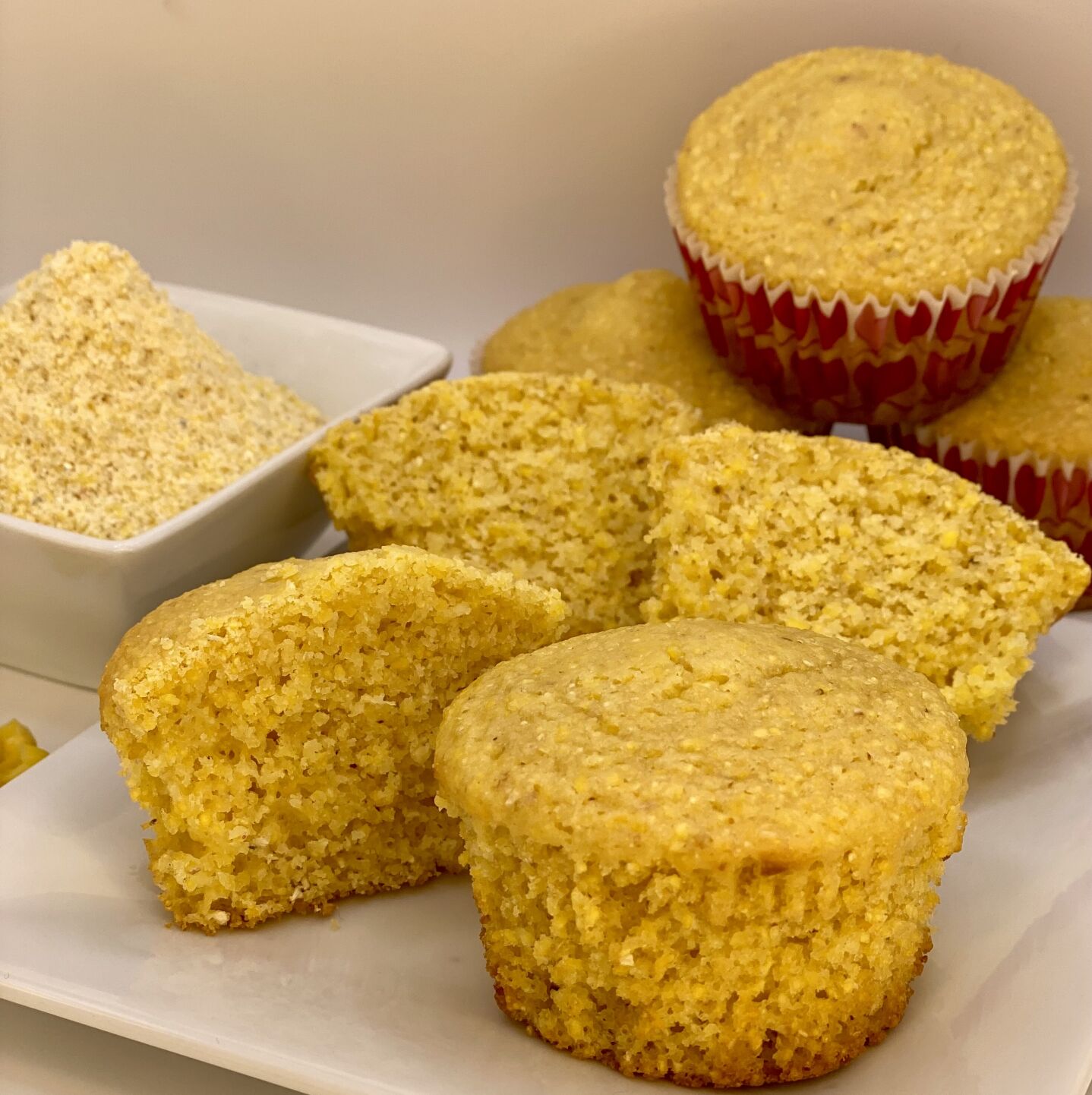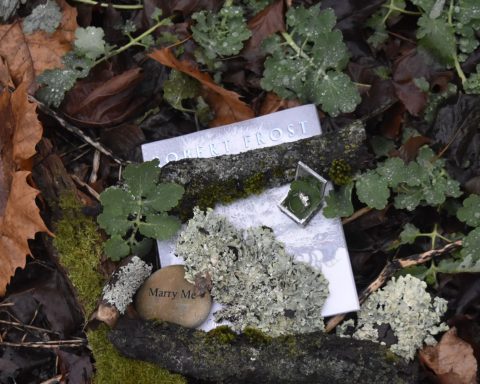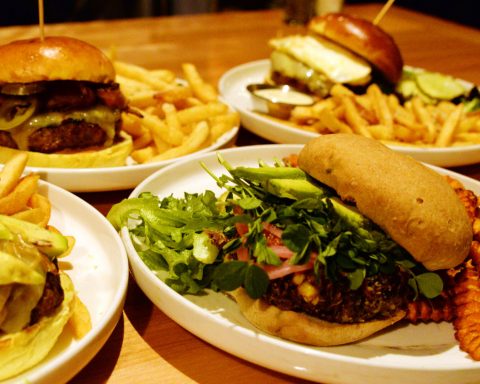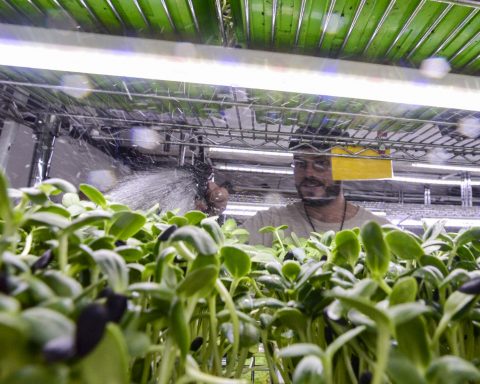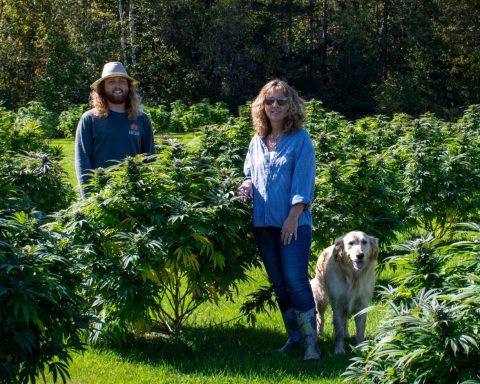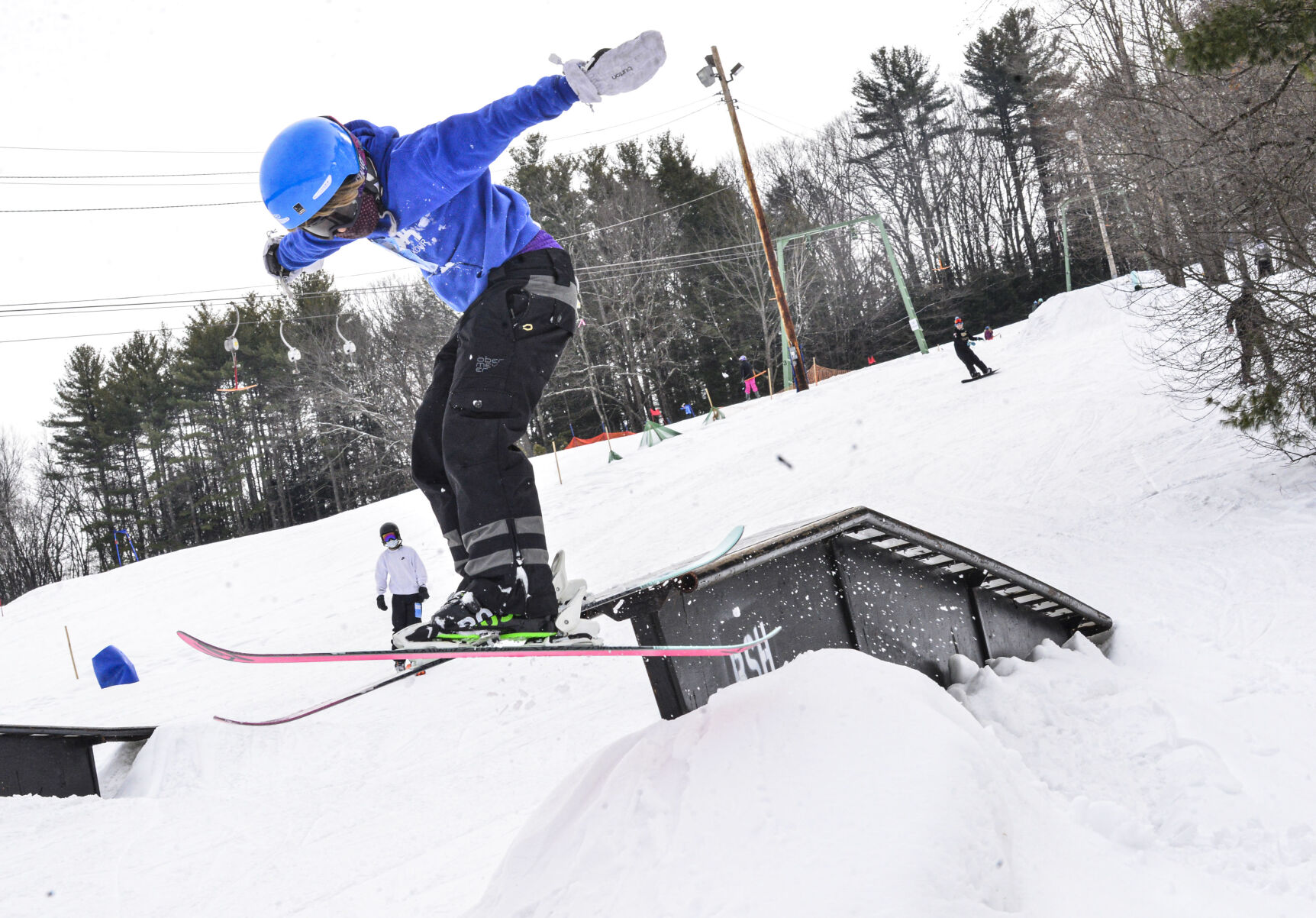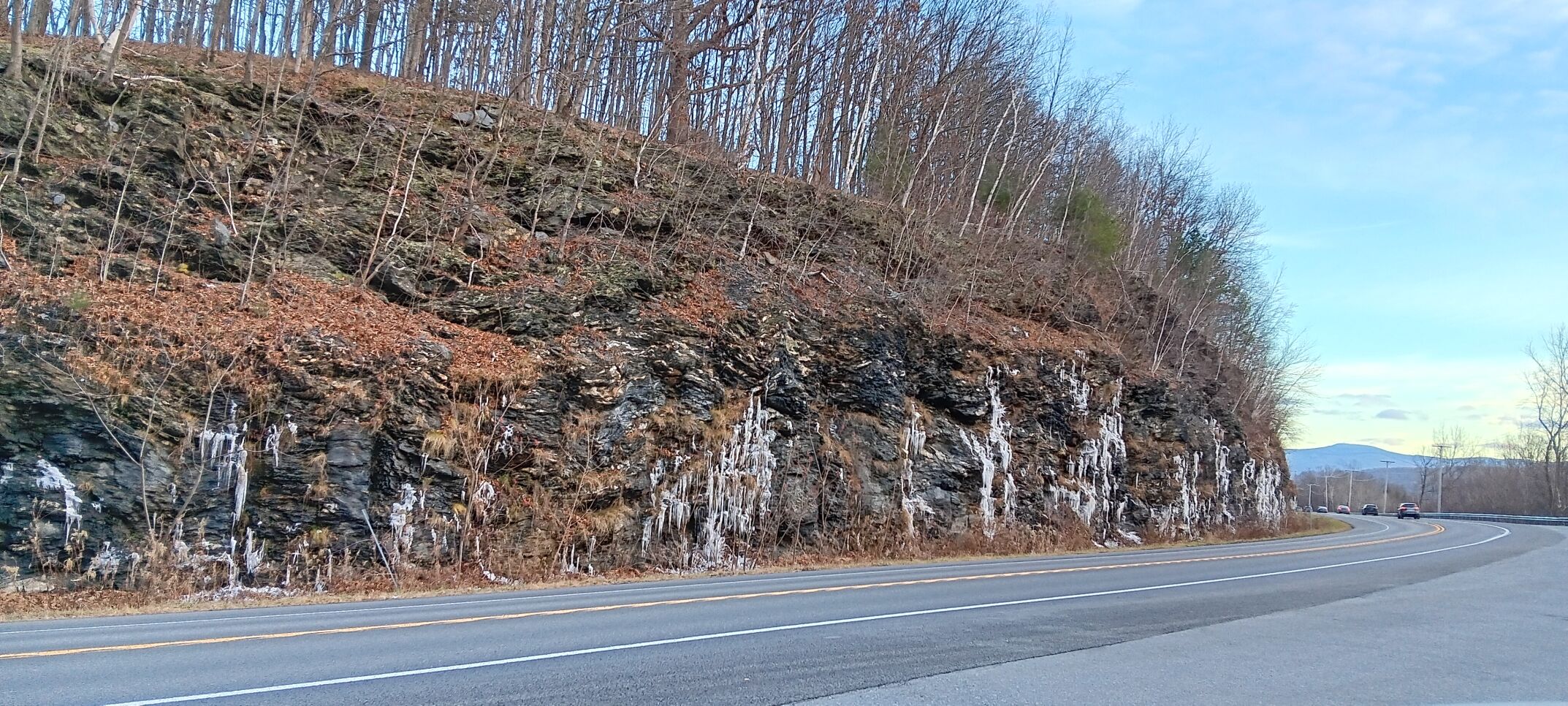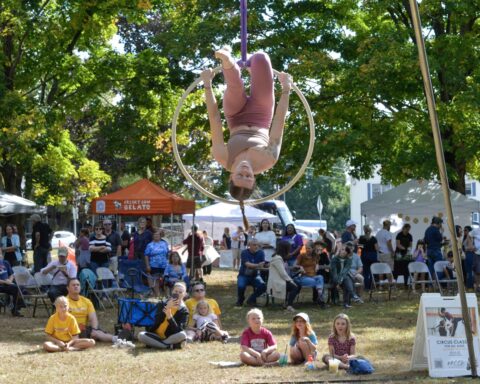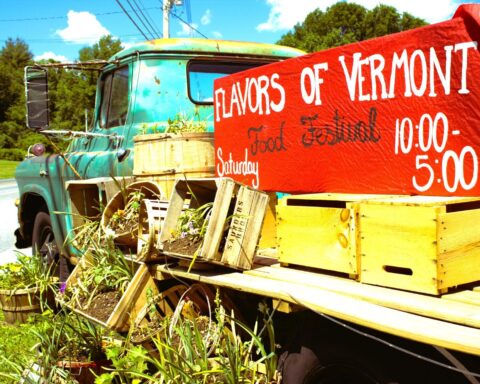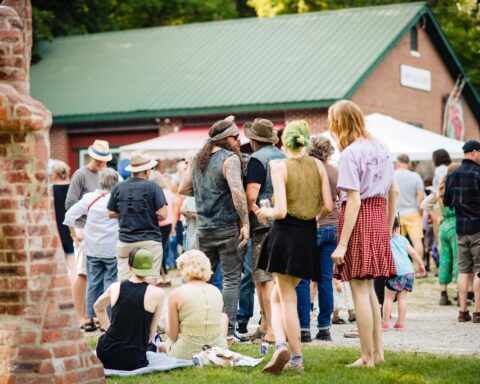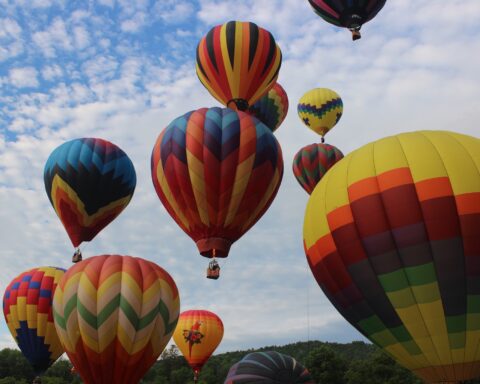By Katharine A. Jameson, Vermont Country correspondent.
We’ve been divided for a long time. Since shortly after Europeans set foot on the land we now call “ours,” we seem to have found discord of one sort or another. We’re out of synch with each other, with our neighboring communities, with the Earth.
It hasn’t always been this way. Evidence suggests that members of the Abenaki Native American Indian tribes were here in Vermont (and elsewhere in New England) 11,000 to 13,000 years ago. During this time, they worked in harmony with all community members, which included humans, animals, plants, ancestors and spirits, to create what they now call forest gardens. Through careful cultivation practices, they grew abundant yields of wild food. Foods grew plentifully, providing animals with nourishment throughout the winter — grooming them for the day that they would present themselves to human members of the community for the taking. A perfect circle, so it seemed.
Growing up in Vermont, we studied local history and learned about figures like Calvin Coolidge, Ethan Allen and the Green Mountain Boys. We did science projects where we recreated the delicate ecosystems found across the state and when we weren’t in school, we traipsed through the woods and listened to our elders talk of days of (more) dirt roads and penny candies at general stores.
One thing I never learned about, however, was the tale of the indigenous peoples native to Vermont.
Perhaps it was because of the racism the area Abenaki tribes experienced or maybe it was because they weren’t recognized as a Native American Indian tribe until 2011, but members of this community seem to struggle to hold onto their history as they piece back together swaths of land taken from them. (They were recently bequeathed 300 acres in Stowe from a benevolent neighbor, Molly Davies).
I meet Don Stevens, Chief of the Nulhegan Band of the Coosuk-Abenaki Nation in a most contemporary way — via Zoom. “Growing up, it wasn’t popular to be native.” Stevens tells of the hatred and discrimination his people experienced. “Nobody should be afraid of their ethnicity or religion or their race.”
Nulhegan means “place where the wooden fish traps are” and is one of four recognized native tribes in Vermont. Tracing his Nulhegan lineage on both sides, Chief Stevens got heavily involved in tribal politics in the mid-nineties. He worked diligently for the tribe’s acquired status and now, along with reclaiming as much of their original land as possible, he has another goal: reintroducing indigenous foods into our broken food system.
“We’re asking our children to save the planet, right?” Chief Stevens asks me. “Well, how do they save the planet if they don’t have an intimate relationship with the environment? They know how to do Facebook and Tik Tok, but do they know how to grow a tomato? You can do that on a balcony in New York City.”
Though no small task, Stevens discusses the onus that we pass to our children: quite literally saving the planet. As we are plunged into a combination of droughts, floods, fires and unprecedented storms, farmland is changing. The Chief points out that Vermont could find itself a main food producing hub if others are no longer able to do so. “It’s pretty common sense that you would need your children to carry on and be good stewards of the land if you want them to take care of it. Or we’re going to eat out of a test tube. I don’t know which. I would much rather eat something that we can groom in the forest.”
Learning from the land
Chief Stevens points out that it’s all in one’s perspective. He gives the example of dandelions. “You might look at them as a weed but I might look at them as a food source,” he explains, noting the wine and greens for which they’re used.
When Europeans arrived in what they later named Vermont, they saw the lush forest gardens Natives had fostered, but didn’t recognize that it had been cultivated. “The sophistication of the agriculture system was so high that people couldn’t see it at all. It just looked like abundant wild lands, but really they were so abundant because of our deep connection and long-term stewardship of them,” Abenaki tribal member, John Hunt describes in a new, short film posted to YouTube about Abenaki food systems.
What can we learn from these growth practices? Professor Tiana Baca of Sterling College explains in this film: “Nature doesn’t grow in monocrops.” She notes that Native people’s lush gardens maximized yields by companion planting crops like the three sisters. “The three sisters is a companion planting group of corn, beans and squash. They’re plants that grow together and support each other. The corn is growing up, it’s providing this living trellis. The beans use that to climb on. The beans are then fixing nitrogen and supporting the growth of the corn and then the squash plant kind of sprawls out and creates this living mulch. All of them working together makes all of them produce better.”
Respect runs deep in the Abenaki tradition. From the elders and ancestors from whom they learn to the food and animals they consume, they bless the animals they dispatch with tobacco and hold sacred the chain of custody of each of their seeds.
“We have to have some foresight about it. Treating the land with respect and not looking at it always through our need, but as a collective community need. In the old days we used to look at community more than individual needs.” Stevens discusses the Native mentality that land, contrary to the European way, is to be shared by all creatures, not owned.
“There is hope,” Chief Stevens says. “There is a way to reconnect and change the outcomes of what is happening. But the only way to do that is to put the effort, time and resources into connecting with us, the native people and others to try to remember that historical knowledge of connection to our land, our animals and our wild food sources. The forests and the wild foods sustained our people for thousands of years. Why would we not think it wouldn’t do that now?”
The Chief set out a few things we can all do to help save the planet.
Create a relationship to place
More and more, we have distanced ourselves from nature. Learn about the place you live and get involved in promoting the overall health of the entire community — not just humans, but animals, trees — everything that lives in that environment. “When you have a close relationship with something” Chief Stevens tells me, “you tend to care more about it. You tend to foster it and you tend to want to make that a healthy relationship. If you don’t have that, you could care less sometimes of what happens because you’re not involved.”
Get growing
We can grow a crop or two anywhere and can support forest and community gardens. We can all be stewards of the land. When developing land, Stevens suggests putting up a tree or plant that gives food. “Instead of planting a cedar hedge, why not plant elderberry or something edible?”
Take responsibility
Wasting food is prevalent in a country where many people suffer food insecurity. If food isn’t going to be eaten, shared or repurposed (the Chief gives the example of using bruised apples in a pie,) feed it to domestic or wild animals or use as compost. “We have to have some foresight about it,” the Chief explains. “Treating the land with respect and not looking at it always through our need, but as a collective community need. In the old days we used to look at community more than individual needs.”
Know where your food comes from
Recently, my English sister recounted a story from long ago when she asked her young daughter if she knew where meat came from. “The Tesco” she responded. Many of us have distanced ourselves from our food sources. Attaching new names to meat like pork, beef or poultry really helps us forget that the meat we’re eating was once an animal. Knowing where our meat comes from and how it was treated during its life is a step in the right direction. In death, you ingest an animal’s life, whether that was a satisfactory life or one of misery.
“We’re respecting that animal and we’re respecting that life that we took with an offering [tobacco] and thanking them for the worthiness for having that food. We don’t go out and kill a deer, the deer offers themselves to us if we’re worthy. We wouldn’t see them if they didn’t want to offer themselves to us. It’s a reverse way of thinking, it’s a gratitude and a gift of receiving rather than the taking of something. It’s gratitude and it’s respect. And being thankful for that.”
Chief Don’s Cornbread
Though he had a recipe for skunk, which may be a delicacy, we both agreed that corn bread was a safer bet. (He hasn’t worked up the courage to try the skunk recipe, either).
Ingredients
1½ cups corn meal
½ cup flour
1/3 cup sugar (I used ¼ cup)
½ teaspoon salt
4 teaspoons baking powder
1 egg
1 cup buttermilk (or 1 cup milk with 1 tablespoon white vinegar or lemon juice added and allowed to sit for 10 minutes)
¼ cup oil
¼ cup maple syrup
Method
Preheat oven to 400°F.
Combine dry ingredients.
Fold in remaining ingredients. Mix.
Fill lined muffin tins halfway full with batter and bake for about 17 minutes.
—
Watch the film
To watch a new film highlighting local food systems by Vermont filmmaker Kevin Chap, visit youtube.com/@wildfoodsnetwork and choose the video called “Abenaki Food Systems,” or visit tinyurl.com/2tpmuw2z.
Katharine Jameson, still living in the urban sprawl of Los Angeles, is originally from Vermont. She returns with her children as often as she can and enjoys yachting in an inflatable rowboat in the pond at her childhood home. She writes a bi-monthly food and health column for Vermont News & Media called “Food For Thought with Kat.” She regularly rails against Big Food and advocates for simpler ingredients on various television programs and offers some healthy (but tasty) recipes on Instagram @foodforthoughtwithkat.
